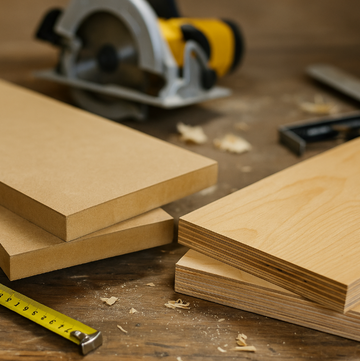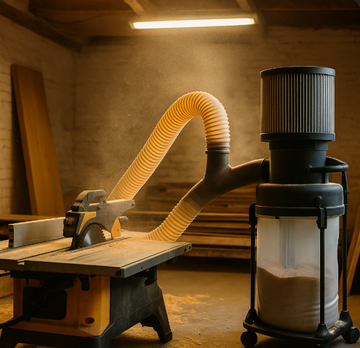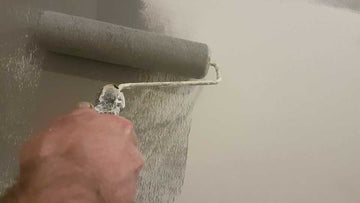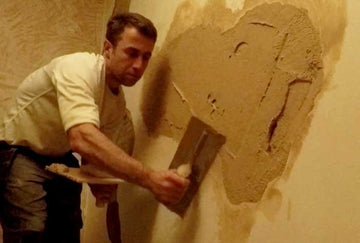The Eternal Timber Debate
Whether you're building a cupboard, a shelf, or a dodgy garden bar (no judgement), at some point you’ll hit the question: MDF or plywood?
They’re both sheet materials. They’re both everywhere. And they both come in “8x4” sizes that’ll barely fit in your hatchback. But they’re very different beasts, and choosing the wrong one can mean warped edges, crumbly corners, or a weekend spent swearing at your jigsaw.
What’s the Difference Anyway?
Here’s the quick version:
- MDF (Medium Density Fibreboard) is made from fine wood fibres and glue, compressed into flat sheets.
- Plywood is made by gluing together thin layers of wood veneer, with the grain alternating for strength.
They may look similar on the trolley, but their behaviour in the real world couldn’t be more different.
Strength, Finish & Cost: The Real-World Test
Let’s break it down based on what you actually care about in a UK home or shed:
MDF Pros:
- Smooth surface – brilliant for painting and cabinetry
- Cheaper than ply (by quite a bit in most cases)
MDF Cons:
- Hates water – a single spill and it swells like a sponge
- Weak edges – splits easily when screwed without pilot holes
Plywood Pros:
- Much stronger, especially for weight-bearing jobs
- Handles moisture better (especially marine ply)
Plywood Cons:
- More expensive
- Surface isn’t as smooth – can splinter or look rough without finishing
What’s Better for What?
Here’s the general rule:
- Use MDF for indoor furniture, painted panels, and decorative trim.
- Use plywood for shelving, flooring, walls, and anything that needs strength or moisture resistance.
Need to cut it? MDF is easier on blades.
Need to screw it? Ply’s your friend (especially along the edge).
Need to paint it? MDF wins hands down.

The Workbench Verdict
There’s no “winner” here — just a smarter material for each job.
If you're indoors and want a smooth, clean look: go MDF.
If it's structural, load-bearing, or moisture-exposed: go plywood.
And if you’re still not sure? Ask yourself what happens if it gets wet.
Because in the UK, let’s be honest… it probably will.
Bonus tip: For bathroom or kitchen jobs, look for moisture-resistant MDF or exterior-grade ply — both available at B&Q, Wickes, or your local timber yard.





